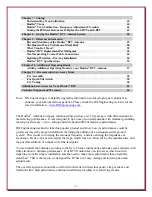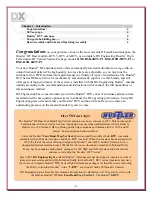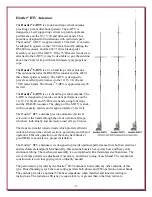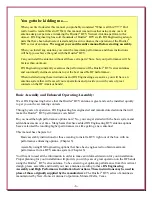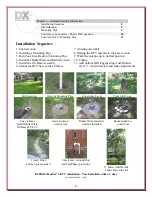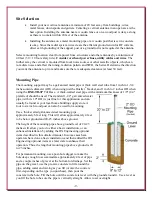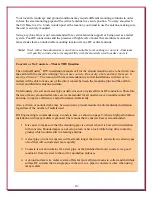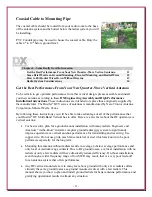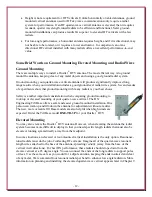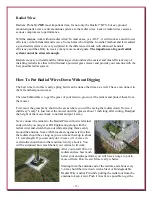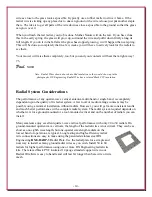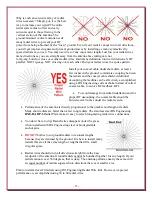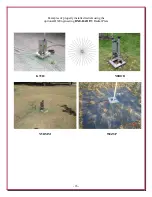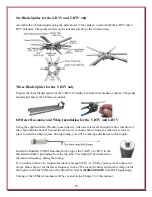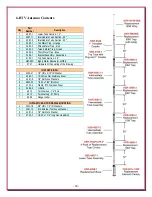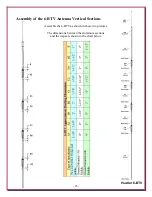
- 10 -
Your location, landscape and ground conditions may require different mounting solutions in order
to have the steel mounting pipe and the vertical antenna in a secure position. You may also attach
the Tilt Base to a 4 to 6 inch wooden post at the location you intend to use the antenna, making sure
the unit is securely mounted.
Using a cyclone fence is not recommended for a vertical antenna support or being used as a radial
system. Poor RF connections and the presence of high levels of noise that are inherent on metal
fences make them an undesirable mounting location for any HF vertical antenna.
Note:
Steel, rather than aluminum, is much more suitable for mounting in concrete. Aluminum
will quickly corrode due to incompatibility with the materials used to make concrete.
Concrete or No Concrete – That is THE Question
The original Hustler
®
BTV installation manuals call for the ground mounting pipe to be driven into
the earth with the specific wording “
Do not use concrete. Do not dig a hole and bury the mast. It
must be driven in.
” The reason for this recommendation is so that installations with few or no
radials will be able to make use of the direct contact between the mounting pipe and the earth to
collect and distribute antenna currents.
Unfortunately, the soil and a steel pipe usually does not provide efficient RF conduction. Therefore,
the use of many ground radial wires are recommended for all quarter-wave ground mounted HF
antenna, to improve efficiency and performance dramatically.
Also, a driven or pounded pipe may be used on any ground-mounted vertical antenna installation,
regardless of the number of radials used.
DX Engineering recommends using a concrete base, as shown on page 9, when a high performance
installation with many radials is planned. The reasons that a concrete base is recommended:
1. It is easier to make sure that the mounting pipe is vertical when it is braced for installation
with concrete. Pounded pipes can develop a lean or hit a rock while being driven into the
ground, which could result in a leaning antenna.
2. A steel pipe or tube in concrete will last much longer than in soil, especially in certain types
of soil that will corrode steel more quickly.
3. Concrete is not an insulator for a steel pipe, as the hardened but moist concrete is a good
conductor from the steel to the soil for grounding purposes.
4. A ground surface wire radial system offers far more efficient means to collect and distribute
surface RF currents than a single pipe in the soil, so a pipe in concrete is okay when using
many radials.



